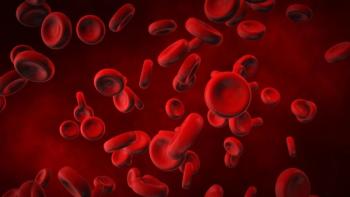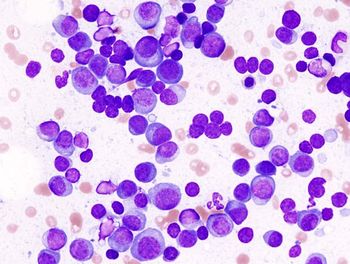
- ONCOLOGY Vol 13 No 3
- Volume 13
- Issue 3
Use of Brachytherapy to Preserve Function in Children With Soft-Tissue Sarcomas
Dr. Nag and colleagues present an excellent review of several of the techniques of brachytherapy used in both the pediatric and adult populations. The authors are to be commended for their comprehensive summary of the results of the major trials of pediatric brachytherapy in the management of soft-tissue sarcomas.
Dr. Nag and colleagues present an excellent review of several of the techniques of brachytherapy used in both the pediatric and adult populations. The authors are to be commended for their comprehensive summary of the results of the major trials of pediatric brachytherapy in the management of soft-tissue sarcomas.
Brachytherapy is a very desirable method of delivering a focally tumoricidal dose of radiation since it is associated with minimal late toxicities to the normal surrounding tissuestoxicities often observed with similar tumor doses delivered by external-beam radiotherapy. In pediatric patients, in whom bone and soft-tissue growth, as well as normal organ development, are major concerns, the benefit of sparing normal tissues from long-term complications is especially relevant.
The authors are quite correct in emphasizing that the successful outcome of brachytherapy in children with soft-tissue sarcomas is highly dependent on careful patient selection. Although, as suggested by the authors, the degree of response to chemotherapy or surgery in such cases would not appear to be a significant factor in the selection of patients, I do agree that patients with small-volume residual or recurrent disease at tumor sites accessible to catheter or applicator placement are ideal candidates for brachytherapy.
Problems Encountered in Applying Brachytherapy
What is most commendable about the current article is the section dedicated to the problems encountered in the clinical application of brachytherapy. The authors apparently are strong advocates of the use of brachytherapy. Nevertheless, they recognize and acknowledge that although brachytherapy is an attractive therapeutic modality, offering excellent results with regard to local control and complication rates when incorporated into the management of pediatric soft-tissue sarcomas, realistically, its practical use in children is limited in scope.
Quite correctly, the authors note the potential for a marginal miss with brachytherapy However, this is a problem inherent to all conformal techniques that treat small tumor volumes. Of greater importance is the fact that there is no single standard of care for brachytherapy, and, consequently, quality assurance guidelines remain ill-defined. Not only do the radioisotopes, techniques, and equipment facilities vary from institution to institution, but more significantly, so does the professional exper-tise of physician(s) performing the procedure(s).
Because of the above-noted factors, combined with the fact that very few centers have the capability of performing brachytherapy in the pediatric population, this technique has never achieved a significant role in the overall management of children with malignancies. As such, the number of trials available for literature review has remained small. Unfortunately, therefore, most of the data on results has been anecdotal at best.
Articles in this issue
almost 27 years ago
WHO Declares Lymphatic Mapping to Be the Standard of Care for Melanomaalmost 27 years ago
Navelbine Increased Elderly Lung Cancer Patients’ Survivalalmost 27 years ago
Consensus Statement on Prevention and Early Diagnosis of Lung CancerNewsletter
Stay up to date on recent advances in the multidisciplinary approach to cancer.

















































































